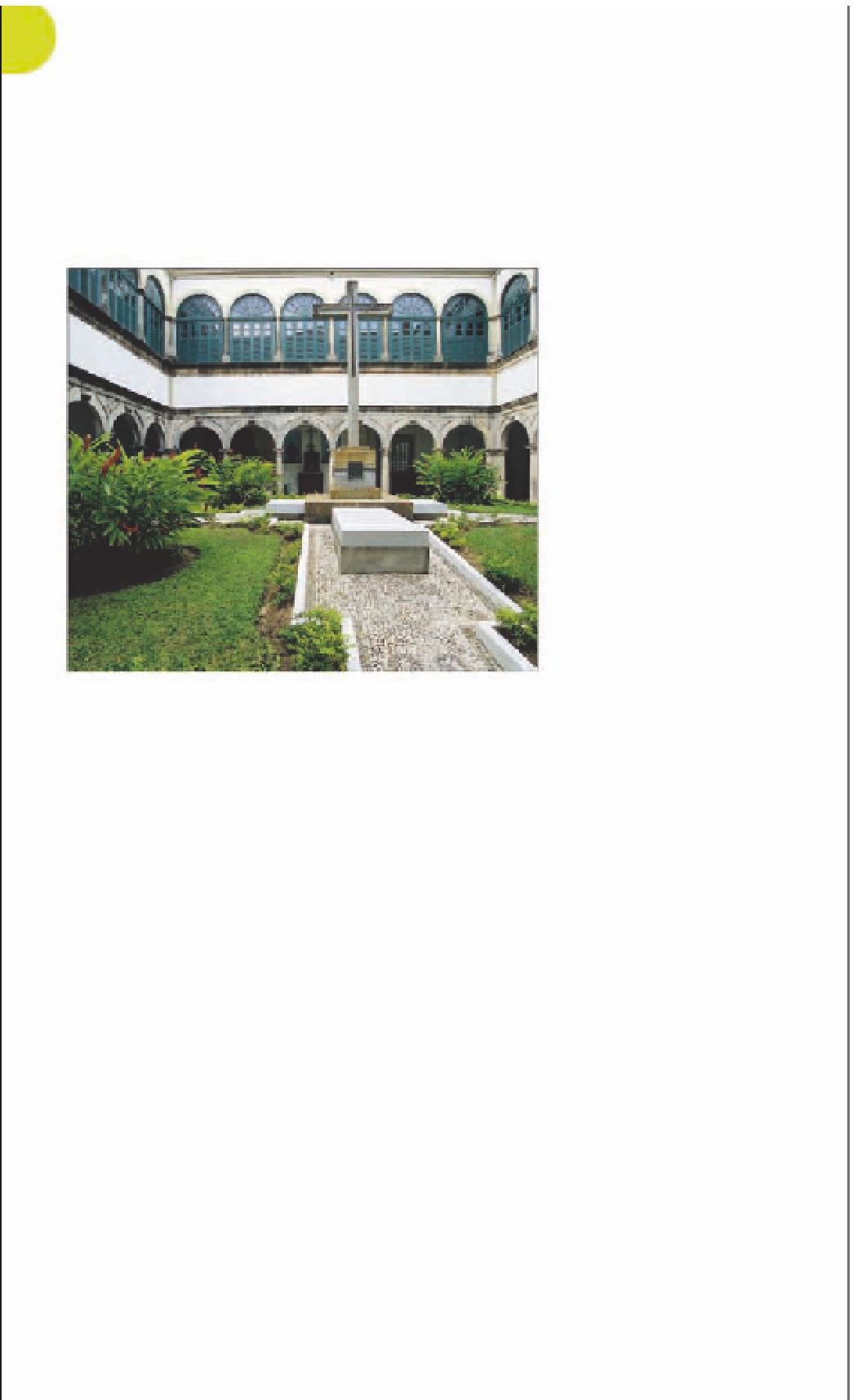Travel Reference
In-Depth Information
Exploring Modern Recife
white Portuguese tiles
(
azulejos
) were used to
decorate the main altar
and the walls of the
small, charming cloister.
However, the
pièce de
résistance
is the
Capela
Dourada
(Golden Chapel),
added in 1695, in an annex
of the main church. All of
the wood in the chapel is
jacaranda and cedar and is
covered in gold leaf or paint.
The intricately carved altars,
arches, and beams showcase
some outstanding Portuguese
Baroque art. Each altar
consists of various arches,
adding a depth of field to the
statues on display. One of the
walls in the church is adorned
with a painting that depicts
the Crucifixion of a group
of Franciscan saints.
Though modern Recife stretches onto the mainland, its
center comprises the islands of Santo Antônio, Boa
Vista, and Recife Antigua. Skyscrapers exist alongside a
handful of old colonial buildings and crowded markets,
lending the city a striking character. The area north of
the center is as appealing, with leafy suburbs and a few
museums and parks. The squares, dotted with impres-
sive churches, retain much of their old-world charm.
R
Catedral de São
Pedro dos Clérigos
Rua São Pedro s/n, Santo Antônio.
Tel
(081) 3224 2954.
#
8am-noon & 2-4pm Mon-Fri.
Dating back to 1728,
Catedral de São Pedro dos
Clérigos is one of the most
impressive churches in
Pernambuco. Its striking
façade is dominated by a
statue of St. Peter, which was
added in 1980. While from
the outside the walls of the
church look perfectly square
and straight, on the inside the
church nave is octagonal. The
best features of the church
are its stunning wood carving
and the illusionistic ceiling.
The main altar, balconies, and
most of the remaining interior
elements were renovated
in the 19th century in the
Rococo style. The only
original pieces that remain
are the two gold-painted
wooden pulpits.
The square in front of
the church,
Pátio de São
Pedro
, is one of Recife's
most popular public squares.
The beautifully restored area
hosts a number of cultural
events. The most important,
Terça Negra (Black Tuesday),
takes place every Tuesday
night. It is widely known
for showcasing typical
regional Afro-Brazilian
musical styles, such as
afoxé
,
maculelê
, and
coco
. The area
also has many fine restaurants.
The courtyard of Igreja São Francisco with a graceful, colonnaded arcade
P
Praça da República
Palácio do Campo das Princesas
Tel
(081) 3425 2124.
#
9am-5pm
Mon-Fri.
Teatro Princesa Isabel
Tel
(081) 3207 6161.
#
Check for
performance timings.
Palácio da
Justiça
Tel
(081) 3419 3222.
Modern Recife's main civic
square, Praça da República,
is located at the tip of Santo
Antônio island. Some of the
city's finest public buildings
can be found here.
The
Palácio do Campo das
Princesas
(Governors' Palace)
building was built in the
1840s. Over the years, reno-
vations and additions have
somewhat altered the original
Neo-Classical design and
made the building more
eclectic. The lovely interior
garden was designed by
Brazil's premier landscape
artist Roberto Burle Marx.
Unfortunately, the only view
available to the public is
the one through the wrought-
iron fence posts.
The
Teatro Princesa Isabel
,
a renovated pink theater,
hosts many of Recife's prime
cultural productions. The
building is an elegant
example of classic imperial
architecture, marked by its
symmetric forms and French
and Italian decorative styles.
With a dome-shaped
cupola, the
Palácio da Justiça
was constructed in 1930 to
mark the presidency of
Getúlio Vargas
(see pp56-7)
.
R
Igreja São Francisco &
Capela Dourada
Rua do Imperador, Santo Antônio.
Tel
(081) 3224 0530.
#
8-11am &
2-5pm Mon-Fri & Sun.
&
One of the major attractions
in Recife, Igreja São Francisco
served as the convent of the
Third Franciscan Order. It was
built in 1606, when the island
of Santo Antônio only had
200 inhabitants. The initial
convent was small and rather
plain. During the Dutch
occupation of Recife (1630-
54), it was used as army
barracks. Renovations began
after the return of the
Franciscans. The courtyard
was added with a surrounding
arcade of delicate and ornate
Tuscan columns. Blue-and-
For hotels and restaurants in this region see pp378-9 and pp403-405



































